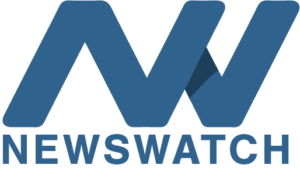As a futurist for over 1000 brands and professional keynote speaker, Scott Steinberg is always up to something interesting, e.g. hosting videos for NewsWatch, launching new books, or debuting a new TV series. (Haven’t checked out Money Shots yet? We highly recommend it.) Now, in his latest adventure, he’s introducing a new teaching and training method he calls POP FUTURE™, which not only shows how to put future trends, new technologies, and emerging business topics in a more intuitive and welcoming context. It also provides a way to talk about and teach these subjects in a way that audiences of all
backgrounds and skill levels can understand.
Confused by a seemingly endless array of new business and technology trends from metaverse solutions to NFTs and machine learning? The POP FUTURE method − which, like Steinberg’s new book Think Like a Futurist, is free to download at www.FuturistsSpeakers.com/PopFuture − can help you bridge the gap. In fact, he’s even teamed up with the Association of Professional Futurists to help raise awareness… and help millions boost their future literacy and working knowledge of new and emerging topics.
As someone who’s helped thousands of working professionals understand how to make sense of future trends, we caught up with him to learn more about what’s coming next.

Q: What is POP FUTURE exactly − and how can it help us adapt to a world of growing change and unpredictability?
A: It’s a way of talking about and teaching new business topics and technology trends that challenges us to put these traditional dry and boring subjects in familiar and fun terms that everyone can understand. It basically asks us to frame these subjects in more approachable, pop culture-friendly contexts − and use all sorts of engaging and creative ways such as animations, explainer videos, cartoons, and interactive games and apps to help get the message across.
After all: Futuristic trends and technologies are every bit as much a part of pop culture today like music, movies, and TV shows… so why do we often make them so dull and difficult to comprehend? And as working professionals, we also have access to more creative tools than ever – if our approach to exploring and researching the world around us is so futuristic, why do we keep using the same methods to communicate (market research reports, PowerPoint presentations, snooze-inducing corporate training sessions, etc.) that we did 30 years ago?

Q: How does POP FUTURE work exactly?
A: Basically, you’d start by applying the methodologies outlined in our free, downloadable book Think Like a Futurist to get a better sense of what trends in life and business are coming next. Then, you can grab a free companion instruction guide What is Pop Future to learn how to communicate ideas more simply and rapidly using creativity, humor, wit, and insight − and fast-track learning and retention. Essentially, by using the POP FUTURE method anyone can learn to spot and adapt to what’s coming next more effectively. And the best part is, it’s a flexible enough way of communicating and learning that anyone can apply it to any industry or setting (including the worlds of teaching and education) and apply their own sense of personality to help their creations stand out and draw attention.
Q: So it can still offer serious results, even though you might use more fun and simple approaches to exploring topics?
A: Absolutely − an exercise in the well-recognized field of “micro-learning,” the POP FUTURE method can help you to more effectively deliver bite-sized learning content just in time when needed — and can
help you grant time-strapped working pros fluency in emerging topics without having to engage in full-fledged courses + learning curriculums.
In other words: If a picture is worth a thousand words, POP FUTURE asks us — how can we likewise find ways to communicate an entire market research report or training manual’s worth of content in just minutes?
Q: Why introduce this now − what was your inspiration?
A: Attention spans are shorter than ever, even as the pace of change, and amount of disruption that we face continues to grow by leaps and bounds. As a professional speaker, I’m often given as little as 30 minutes to help find quick and simple ways to communicate sophisticated, new, and novel ideas to audiences of differing skill levels, fields, and backgrounds. I realized just how many people it could help by finding ways to apply lessons in fast-tracking training and education that I’d learned from the stage to other forms of communication and training. It’s about getting people up to speed on breaking developments faster and more effectively.

Q: Who else is helping out with this new effort – and what comes next in the world of POP FUTURE?
A: David Thomas, PhD, executive director of online programs at theUniversity of Denver and co-founder of Professors at Play is helping us provide learning content and educational programming. We’ll also be introducing various new pieces of content (videos, articles, training guides, etc.) in the coming months, which you can grab at our website, or via the Association of Professional Futurists.





